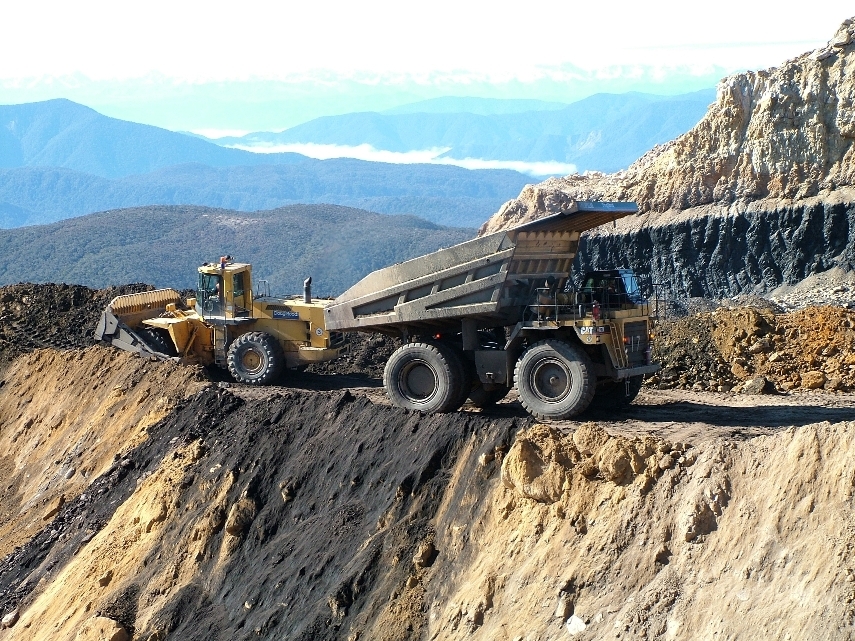Undermining NZ’s clean, green image
Blogger: Forest & Bird Advocacy Manager Kevin Hackwell

Stockton Mine on the West Coast, Photo: Peter Lusk
Energy and Resources Minster Gerry Brownlee has his eyes on our stunning forests – those precious parts of our land that inspire the 100% Pure New Zealand tourism success story.
And Mr Brownlee is not looking to join the millions of overseas tourists and proud Kiwis who walk, kayak, fish, raft, swim, photograph and simply relax in our national parks and other conservation areas every year.
No, he is eyeing them for open-cast mines.
Walkers on the sunny shores of Abel Tasman National Park should watch out for a glimpse of house-dwarfing mining trucks between the beech trees. There’s limestone and marble to be found under these forests.
And divers at the Poor Knights Islands Marine Reserve could be sharing the pristine waters with barges vacuuming up the seafloor in the search for minerals.
These conservation areas are where New Zealand’s unique – and often endangered – wildlife and plants are protected for future generations.
Even if you forget about the natural values of the conservation estate, its economic value is colossal. Our biggest industry – tourism – generates more than $20 billion a year. And 1.3 million overseas tourists visited New Zealand’s main national parks in 2008, according to Ministry of Tourism figures.
Mr Brownlee has asked staff to look at the mining potential of core conservation land currently protected by Schedule 4 of the Crown Minerals Act 1991. This land is 40 per cent of the conservation estate, and amounts to 13 per cent of New Zealand’s total land area.
Contrast the billions from tourism’s ongoing income with Mr Brownlee’s estimates of what miners will get out of the whole of New Zealand – $100 billion from low-grade, high-polluting lignite brown coal and $40 billion from other minerals. Only a small proportion of these minerals are in the 13 per cent of the country’s land areas presently protected by Schedule 4.
Landscape-scarring, open-cast mines would be needed to extract the minerals Mr Brownlee believes might be there because they would be found in such tiny concentrations.
Mr Brownlee holds up Solid Energy’s West Coast Stockton Mine as a shining example of environmentally friendly mining. Giant native land snails were moved from the site before mining started but scientists are finding that the translocated snails are not doing so well as in their natural home. Their original mountain top has been completely removed and is now a bleak moonscape, drained by polluted rivers.
Nature lovers set their sights a lot higher than Mr Brownlee, and Forest & Bird will be working hard to keep our conservation land 100% Pure.
